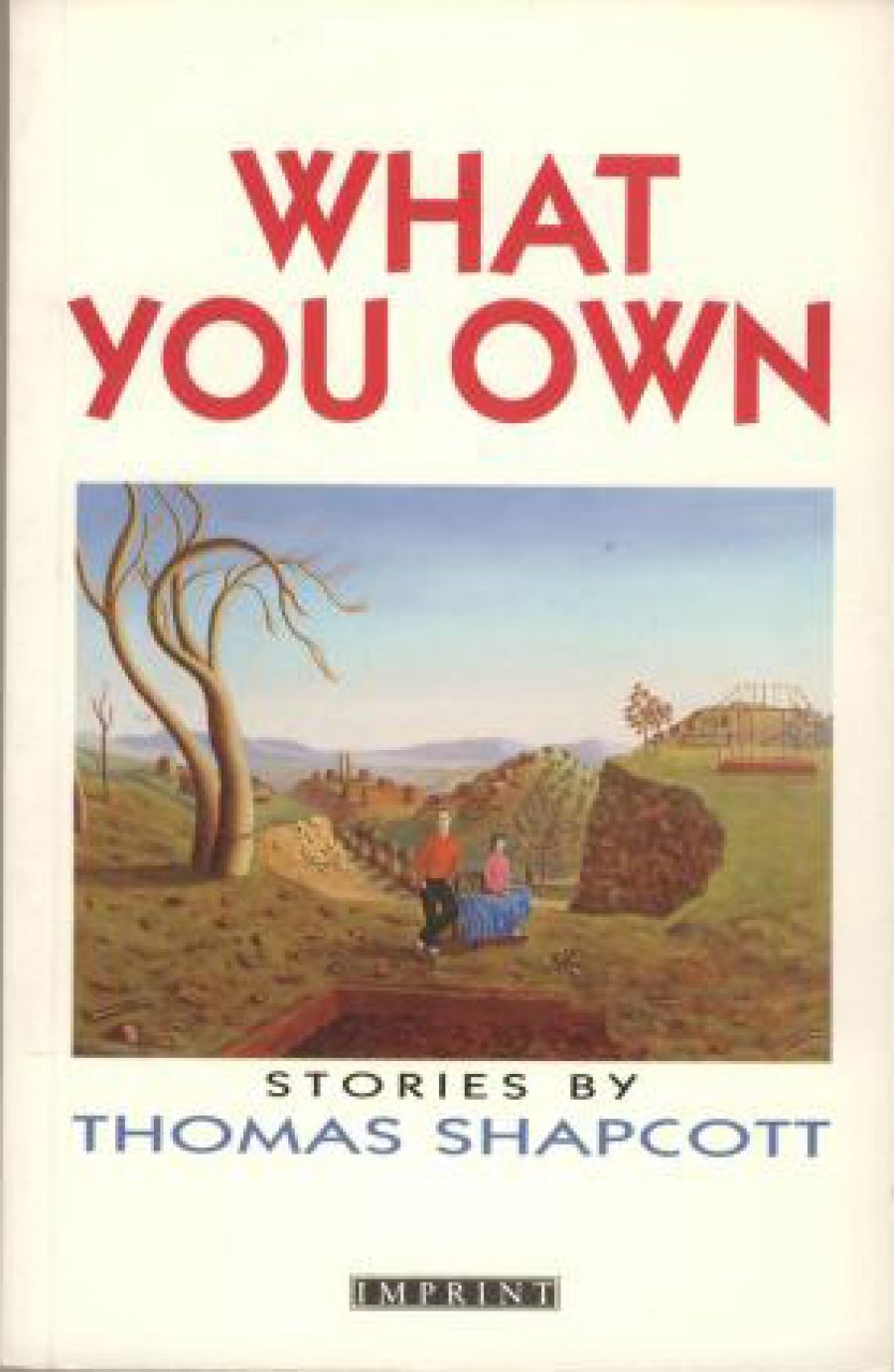
- Free Article: No
- Contents Category: Fiction
- Review Article: Yes
- Online Only: No
- Custom Highlight Text:
Come on in. Do you like mango chutney? I myself have never had mango chutney, not liking mangos, but Phil’s an expert on making the stuff. It never lasts, but make sure you use green mangos because the old ones are too stringy.
- Book 1 Title: What You Own
- Book 1 Biblio: Angus and Robertson, $14.95 pb, 218 pp
The past is sometimes something to be cherished, like the warm summer days on the beach far away from the torment of war, but often the past is painful and memories are only triggered by smells or lychees or even perhaps small bronze deities of Vishnu sitting on stylised lotuses. Such memories can remind us of ex-wives and husbands or fathers, long since gone. Throughout each section the past is seen as something that can destroy, as people often don’t forget the details of someone or something that has absorbed them. In these cases the past is often frozen ‘in its impossibly pure state’ like a painting which captures ‘like a flashlight, the moment before’:
I do not believe the past is another country. It is more chilling to realise that it is unwilling to let go, that it is still our own, staking claims that we may not even be prepared to face up to.
The theme of owning, the idea that what you own is not something you, yourself, can always determine, is more prominent in the third section. It is, however, there subliminally throughout the book, and it takes over in the end. What you own could be as obvious as an appendix, or as elusive as a memory, but you cannot buy the things you own, these stories suggest, they are simply there, and in the end they are taken and passed on to others. This is also something you cannot determine.
Each story, while separate, often contains phrases and words taken from the story before, repeated as it might be in a large poem or song with a chorus. Thus each story is linked and, while this technique can produce repetitiveness, here it brings otherwise unrelated characters together. Rather than detracting from the book’s effectiveness, it creates shared experience.
You may not be able to relate to the particular experiences of these characters, unless you’ve had a gangrenous appendix, or walked naked hand in hand with your partner through meadows, or eaten witchetty grubs or studied the mating habits of funnel web spiders. The longest story tells about a young girl, once named Cynthia, who ripped her mother’s dress to shreds with a pair of secateurs. From then on she is known as Secateur.
The stories mix the philosophical with the everyday. While the characters may be out of the ordinary, the stories contain references to everyday occurrences; people watch Neighbours, go to Amnesty International meetings, watch videos, go shopping, talk to friends. And so from the poetic imagery and elegant prose, you can be brought back to earth by the banal.
These stories show the evidence of Thomas Shapcott’s skills with poetry. (He was awarded the 1989 Gold Wreath for Poetry at the Struge International Festival in Yugoslavia.) At times the poetic touch makes them appear disjointed, but then he melds them back together in a way that makes paragraphs fit together hand in glove.
These are, however, somewhat negative stories. There are glimmers of hope, but then you realise all is not what it seemed, and you’re back at the beginning, where nothing really matters because what you own or what you have is only borrowed.
What You Own will quietly draw you in, and absorb you, so that you will want to understand more about the nature of these people and their lives. This collection of finely written, poetic stories, sad but strong, is a reflection of our society and reflects on growing old in that society.


Comments powered by CComment